
The Story of Redemption
Nothing serves to strengthen our faith so much as seeing the various patterns which God has woven into the pages of Scriptures in order to form a beautiful tapastry of His redeeming grace in Christ. It is not uncommon for theologians to refer to the meta-narrative, or the story of Scripture, as they seek to highlight the organic Christological connectivity of God's revelation in the Bible. Over the years, I've sought to share some of the biblical theological insights that I have gleaned from Scripture and from many of the great theologians of church history. While there are so many rich redemptive-historical connections to be made in Scripture, here is a digestion of some of what I have personally found to be the most spiritually stimulating redemptive-historical meditations from Scripture--combined with a few historical references:
- At creation, the Triune God looked back over His newly made world and pronounced it "good." In the work of redemption, Jesus looked back over all that He had accomplished and proclaimed, "It is finished." William Blaikie captured this so well when he wrote: "That cry with a loud voice, 'It is finished,' immediately before He resigned His spirit into His Father’s hands, was in many ways most significant. It indicated the feeling of the Redeemer surveying His work from the close, corresponding to the feeling of the Creator when He saw everything He had made, and, behold, it was very good."1
- As the Spirit of God hovered over the waters of creation--bringing new life out of the darkness--so He overshadowed the virgin Mary to knit together a human nature for the Son of God to take to Himself in order to bring about the new creation. Sinclair Ferguson elucidates the mystery of the Spirit's work in creation and redemption in the following way: "It is an amazing, supernatural miracle; but like God’s great works–creation, incarnation, crucifixion, resurrection–done safe from men’s prying eyes. He brings light out of darkness. He brings His Son into the dark womb of a virgin."2
- At the creation of man, the Lord breathed the breath of life into him--making him a living being (Gen. 2:7). At the inauguration of the new creation, Jesus breathed the Spirit of life into His people--making them spiritually living beings (John 20:22).
- As God put Adam to sleep and created a bride for him out of his side, so God put Jesus to sleep in death and took a bride for Him out of His pierced side. Matthew Henry drew out this parallel when he wrote: "Adam was a figure of him that was to come; for out of the side of Christ, the second Adam, his spouse the church was formed, when he slept the sleep, the deep sleep, of death upon the cross, in order to which his side was opened, and there came out blood and water, blood to purchase his church and water to purify it to himself."3
- Eve seems to have been presented to Adam on the Sabbath Day when he awoke from sleep. So, the bride of Christ, was presented to Him on the first day of the week when he awoke at His resurrection. Jonathan Edwards noted this when he wrote: "When [Adam] was in a deep sleep, Eve was made of his rib. And when he rose from his deep sleep in the morning, and the sun arose, and all things were renewed, he received his beauteous spouse that had been formed of him. She was brought and presented to him in perfect beauty and purity: which represents being of Christ by his death and his obtaining the church by his death...So Christ’s resurrection, when he rose from that death whereby he had purchased the church, was on the sabbath, the first day of the week, the first day of Christ’s immortal life, and the day when he first received what he had purchased by his death."4
- Man fell in a Garden, therefore, it was fitting that the work of redemption should begin (as the place of suffering) in a Garden and end (in a place of victory) in a Garden. Jesus began His sufferings in the Garden of Gethsemane and ended them triumphantly at the Garden tomb. Isaac Ambrose wrote: "A garden was the place wherein we fell, and therefore Christ made choice of a garden to begin the work of our redemption...Consider him entering into the garden of Gethsemane: in a garden Adam sinned, and in this garden Christ must suffer. Into this garden no sooner was he entered, but he began to be agonized."5
- When Adam sinned, the Lord caused thorns to cover the face of the ground (i.e. the place of blessing now becomes the place of the curse); Jesus, the second Adam, wore the crown of thorns on His head during His sufferings--a symbol that He was the curse-bearing and curse-removing Redeemer. Matthew Henry noted: "Thorns came in with sin, and were part of the curse that was the product of sin, Gen. 3:18. Therefore Christ, being made a curse for us, and dying to remove the curse from us, felt the pain and smart of those thorns, nay, and binds them as a crown to him (Job. 31:36 ); for his sufferings for us were his glory."6
- At the fall, the Lord declared that man would now eat bread by the sweat of His brow. Jesus, as He began His sufferings for redemption of man, sweat great drops of blood in order to give man His flesh to eat as the bread from heaven. Matthew Henry again made the observation: "Sweat came in with sin, and was a branch of the curse, Gen. 3:19. And therefore when Christ was made sin and a curse for us, He underwent a grievous sweat, that in the sweat of His face we might eat bread, and that He might sanctify and sweeten all our trials to us."7
- After Adam's rebellion, the Lord cursed the ground because it was the place of special blessing out of which He had made man. The ground was further cursed when Cain killed Abel. God said that the blood of Abel cried out, from the ground, for vengeance. The blood of Jesus fell into the cursed ground when He was crucified. The writer of Hebrews says that the blood of Jesus "cries out for better things than that of Abel." Jesus' blood cries out for redemption and forgiveness from the very place from which rebellion originally sprung.
- Adam's sin brought all of the misery into this world, including the physical deformities and diseases. Jesus came as the second Adam to undo all that Adam did. If we were to put together all of the healing miracles of Jesus (i.e. the healing of the lame, blind, deaf, dumb, etc.) we would have a wholly deformed person. Jesus came to bring restoration in part in order to stir up the confidence of His people that He is the Redeemer who will heal His people in whole in the resurrection from the dead.
- After Adam sinned, God drove man away from Himself, out of the Garden, east of Eden and into the no-man's land of the wilderness of this fallen world; at His death, Jesus was driven away from the presence of God when he cried, "My God, My God, Why have You forsaken Me," into the wilderness of the wrath and curse of God in order to give man a way back to the presence of God.
- The Tabernacle was the mobile dwelling place of God--a tent covered in skin. When Jesus came, the Apostle John tells us that "He tabernacled among us." Jesus is the enfleshed, mobile dwelling place of God. In Him dwells all the fullness of the Godhead bodily.
- In the Tabernacle and Temple, the glory of God came and dwelt over the mercy seat between the cherubim which were symbolically facing one another and looking steadily into that glory; At the resurrection, two angels were found sitting inside the empty tomb--one at the head and the other at the feet where the body of Jesus had lay. The symbolism of the Ark was fulfilled in Christ. God's glory is manifest in the resurrection of Jesus. Richard Sibbes set this parallel forth when he wrote: "As Mary wept, she stooped down and looked into the sepulcher, and there saw two Angels in white…They were one at the head, and the other at the feet. As in the law, when the mercy seat was made, two cherubim were also framed, and placed one at the one end, and the other at the other end thereof, with their faces looking toward one another, Exodus 25:20. And, when Christ was risen, there were two angels, one at the head, another at the feet, to show that peace was to be expected in the true propitiatory, Jesus Christ…Peace was made between heaven and earth."8
- As God commanded Israel to make holy war with the corrupt nations in the promised land--in order to cleanse a dwelling place of God--so God makes war against our sin by pouring His wrath out on His Son on the cross--in order to purify the hearts of His people, His dwelling place.
- As the veil blocked the way for sinful men to enter into the presence of God, so the flesh of Jesus veiled the divine glory. The veil was torn in two from top to bottom when the veil of Jesus' flesh was torn apart on the cross, making way to the presence of God in Christ.
- There is a contrast between the first miracle of Moses, the Old Covenant typical redeemer, and the first miracle of Jesus, the New Covenant Redeemer. Moses turned water to blood--showing the forthcoming judgment of God. Jesus turned water to wine--thereby intimating that He had come to bring eschatological joy and blessing. Robert Maguire shared this wonderful insight when he wrote: "In the Old Testament Scriptures we read of 'water turned into blood'–a deed of vengeance and of wrath; a judicial punishment upon a wicked king and a disobedient nation; a specimen too of the general character of the miracles of the old dispensation. In the New Testament, however, we read of “water turned into wine;” the genial, generous, refreshing fruit of the vine;–emblem of the fullness, and blessing and peace which were to characterize the New Dispensation."9
- Jesus recapitulated the history of Israel, showing that He was the true Israel, God's eschatological Son. Old Covenant Israel went down to Egypt, out of Egypt, through the waters, into the wilderness, up to the mountain, became an established kingdom, received the prophetic ministry and were exiled. Jesus went down into Egypt, came out of Egypt, went through the waters, into the wilderness and up on the mountain. He established God's kingdom and fulfilled the prophetic ministry. Finally, he was exiled at the cross and restored in the resurrection.
1. William Blaikie Glimpses of the Inner Life of Our Lord (London: Hodder and Stoughten, 1876) pp. 273-275.
2. An excerpt from Sinclair Ferguson’s sermon, “Jesus, Name Above All Names: Immanuel.”
3. Matthew Henry Exposition of the Old and New Testament (London: Joseph Robinson, 1828) vol. 1 p. 12
4. Jonathan Edwards. (2000). The “Miscellanies”: (Entry Nos. 501–832). (A. Chamberlain & H. S. Stout, Eds.) (Vol. 18, pp. 288–289). New Haven; London: Yale University Press.
5. Isaac Ambrose Looking Unto Jesus (Pittsburgh: Luke Loomis & Co., 1832) pp. 337-338.
6. Matthew Henry Exposition of the Old and New Testament (Philadelphia: Towar & Hogan, 1828) p. 331
7. Matthew Henry Exposition of the Old and New Testament, vol 3 (London: Joseph Robinson, 1828) p. 441
8. Richard Sibbes "A Heavenly Conference (p. 2)," in The Complete Work of Richard Sibbes vol. 6 (Edinburgh: James Nichol, 1863) p. 419
9. Robert Maguire The Miracles of Christ (London: Weeks and Co., 1863) p. 24
Christward Collective is a conversation of the Alliance of Confessing Evangelicals. It is supported only by its readers and gracious Christians like you. Please prayerfully consider supporting Christward Collective and the mission of the Alliance.

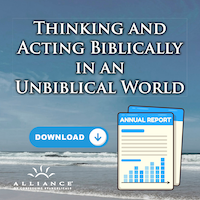
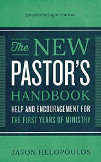
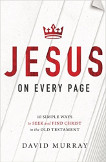
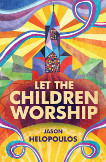
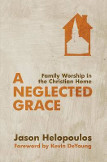













 © Alliance of Confessing Evangelicals
© Alliance of Confessing Evangelicals


